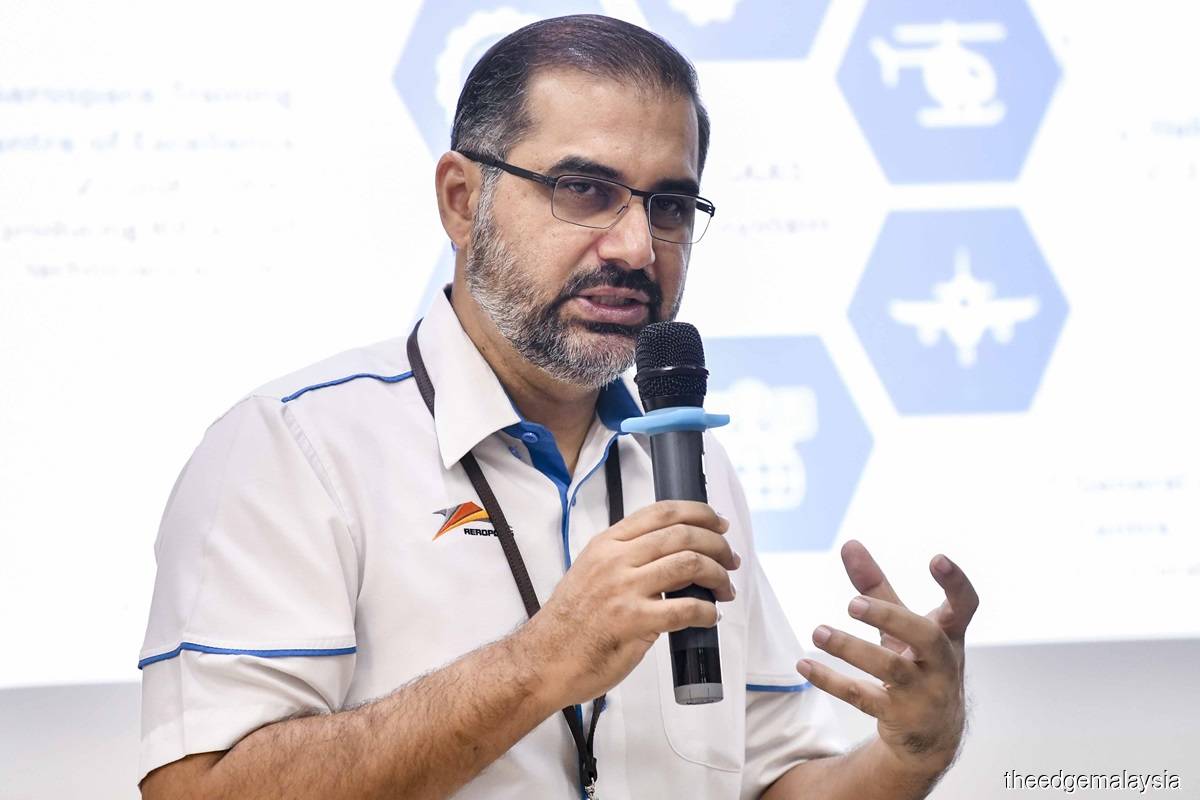Subang Airport Ready to Handle Up to Two Jets by End-March, Double Passenger Capacity by June — MAHB
edgeinvest
Publish date: Thu, 21 Mar 2024, 03:52 PM
SUBANG (March 20): Sultan Abdul Aziz Shah Airport here, or Subang Airport, will be able to handle two narrow-body jets like a Boeing 737 or Airbus A320 by end-March, said KLIA Aeropolis Sdn Bhd head Randhill Singh.
The airport will also see its passenger capacity double by June to three million passengers from 1.5 million passengers currently, as part of the Subang Airport Regeneration Plan (SARP).
Under Phase 1 of SARP, however, the capacity will increase to five million passengers in four to five years, and up to eight million passengers by 2030, Randhill told a media briefing on SARP on Wednesday.
“When we expand the terminal, we will serve scheduled jet operations.”
Under the revised SARP, Subang Airport will see the return of scheduled jet passenger and cargo flights. The airport currently serves propeller-driven aircraft such as turboprops, as well as business jets, helicopters and light and military aircraft.
"We haven't determine the airlines (that will operate jets at Subang Airport) yet. There is a limit to how much we can expand here. We want to see which type of operators [will] come in with what kind of routes. So who the airlines are, at this point of time, we have not yet concluded. That is a process that will take some time," he said.
Randhill also declined to reveal the total cost of works for the revised SARP, except to say that “the new operating agreements (signed on Monday between MAHB and the government) allow for a more structured cost recovery between us and the government”.
In the immediate term, Malaysia Airports Holdings Bhd (MAHB) will install new check-in kiosks and a new dedicated baggage reclaim system at Subang Airport. “We will also reconfigure the aircraft parking bays to [cater to] five ATR turboprops and six narrow-body jets. Currently, [the parking bays cater to] 11 ATRs or nine ATRs and one narrow-body aircraft. [With the reconfiguration,] jet operations can commence from the second half of this year," said Randhill.
In April 2021, MAHB unveiled its Subang Airport regeneration concept master plan — a RM1.3 billion plan that includes transforming the old airport into a city airport that can serve about five million passengers a year — after three years in the works. However, the redevelopment is now expected to cost more than the RM1.3 billion initially proposed, with the terminal expansion and modernisation to support narrow-body jets.
Homegrown airline SKS Airways has leased 10 Embraer E195-E2 aircraft, of which two are expected to be delivered in 2024. It has announced that they will be based at Subang Airport.
On concerns that allowing commercial passenger jets to return to Subang Airport could potentially cannibalise traffic at the Kuala Lumpur International Airport (KLIA) in Sepang, Randhill said: “We manage KLIA and Subang not as two distinct airports, but as a portfolio of two airports. When you have a portfolio of two airports, you always think in terms of how to maximise the portfolio. Both these airports will serve different needs. For example, [the] cargo [business] will move out of Subang to KLIA. Focus on cargo [business] will be in KLIA [while] helicopter and business aviation [activities] will be in Subang.
“In terms of cannibalisation of scheduled jets for commercial, again it is limited because you have a cap of up to eight million (passengers per year at Subang Airport). There is also a cap in terms of operating hours because of the residential areas (surrounding Subang Airport).
“As such, Subang Airport serves more of point-to-point destinations of up to five hours flight,” Randhill said, adding that DHL Express and local air freight operator Raya Airways Sdn Bhd will relocate their current Subang Airport facility to Sepang next month.
On the main road leading into and out of Subang Airport, where there are already high traffic flow at peak hours, Randhill agrees that the SARP will not work without a road realignment.
"This is a critical aspect of our plan. In fact, obtaining approvals hinges on addressing this issue, including conducting traffic impact assessments and road safety audits.
"It (road realignment) will be fairly extensive, which will be part of the cost recovery model (between MAHB and the government). We have engaged the ministries of transport and works. Still, we don’t expect a significant increase in volume of motorists because of the (potential increase to) three million passengers. The real increase will come beyond that.”
The SARP entails three segments: city airport, aerospace ecosystem and business aviation. Under the business aviation segment, it includes reconfiguring the existing airside layout and converting adjacent landside into airside, that is, more efficient use of land to have more business aviation hangars and fit more business aviation operators. This will see the total lettable gross floor area of hangars and workable space increasing by 2.3 times from 1.7 million sq ft to 3.9 million sq ft by 2030.
According to Randhill, MAHB hosts more than 30% of the country’s aerospace supply chain in Subang and Sepang, which contributes more than half of the national aerospace revenue. In Subang Airport alone, it houses more than 60 brands providing over 4,000 jobs.
Source: TheEdge - 21 Mar 2024
Related Stocks
| Chart | Stock Name | Last | Change | Volume |
|---|
More articles on CEO Morning Brief
Created by edgeinvest | Jul 19, 2024
Created by edgeinvest | Jul 19, 2024
Created by edgeinvest | Jul 19, 2024
Created by edgeinvest | Jul 19, 2024
Created by edgeinvest | Jul 19, 2024
Created by edgeinvest | Jul 19, 2024
Created by edgeinvest | Jul 19, 2024
























